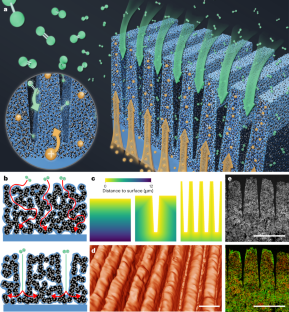2023-06-26 オークリッジ国立研究所(ORNL)
◆今後はより洗練されたモデリングデータを活用し、コア崩壊超新星などの現象を観測する可能性が高まると期待されています。この研究はエネルギー省科学局の施設であるOLCFとALCFによって支援されました。
<関連情報>
- https://www.ornl.gov/news/university-tennessee-ornl-researchers-use-summit-predict-gravitational-wave-signatures-needed
- https://journals.aps.org/prd/abstract/10.1103/PhysRevD.107.043008
9.6,15,25億年前の超新星からのコア崩壊重力波放出 25 M ⊙ Core collapse supernova gravitational wave emission for progenitors of 9.6, 15, and 25M⊙
Anthony Mezzacappa, Pedro Marronetti, Ryan E. Landfield, Eric J. Lentz, R. Daniel Murphy, W. Raphael Hix, J. Austin Harris, Stephen W. Bruenn, John M. Blondin, O. E. Bronson Messer, Jordi Casanova, and Luke L. Kronzer
Physical Review D Published 9 February 2023
ABSTRACT
We present gravitational wave emission predictions based on three core collapse supernova simulations corresponding to three different progenitor masses. The masses span a large range, between 9.6 and 25M⊙, are all initially nonrotating, and are of two metallicities: zero and solar. We compute both the temporal evolution of the gravitational wave strains for both the plus and the cross polarizations, as well as their spectral decomposition and characteristic strains. The temporal evolution of our zero metallicity 9.6M⊙ progenitor model is distinct from the temporal evolution of our solar metallicity 15M⊙ progenitor model and our zero metallicity 25M⊙ progenitor model. In the former case, the high-frequency gravitational wave emission is largely confined to a brief time period ∼75 ms after bounce, whereas in the latter two cases high-frequency emission does not commence until ∼125 ms after bounce or later. The excitation mechanisms of the high-frequency emission in all three cases correspond to proto-neutron star convection and accretion onto the proto-neutron star from the convective gain layer above it, with the former playing the dominant role for most of the evolution. The low-frequency emission in all three models exhibits very similar behavior. At frequencies below ∼250 Hz, gravitational waves are emitted by neutrino-driven convection and the standing accretion shock instability (SASI). This emission extends throughout the simulations when a gain region is present. In all three models, explosion is observed at ∼125, ∼500, and ∼250 ms after bounce in the 9.6, 15, and 25M⊙ progenitor models, respectively. At these times, the low-frequency gravitational wave emission is joined by very low-frequency emission, below ∼10 Hz. These very low-frequency episodes are the result of explosion and begin at the above designated explosion times in each of our models. Our characteristic strains tell us that, in principle, all three gravitational wave signals would be detectable by current-generation detectors for a supernova at a distance of 10 kpc. However, our 9.6M⊙ progenitor model is a significantly weaker source of gravitational waves, with strain amplitudes approximately 5–10 times less than in our other two models. The characteristic strain for this model tells us that such a supernova would be detectable only within a much more narrow frequency range around the maximum sensitivity of today’s detectors. Finally, in our 9.6M⊙ progenitor model, we see very high-frequency gravitational radiation, extending up to ∼2000 Hz. This feature results from the interaction of shock- and deleptonization-induced convection with perturbations introduced in the progenitor by nuclear burning during core collapse. While unique to the 9.6M⊙ progenitor model analyzed here, this very high-frequency emission may, in fact, be a generic feature of the predictions for the gravitational wave emission from all core collapse supernova models when simulations are performed with three-dimensional progenitors.



